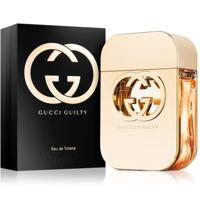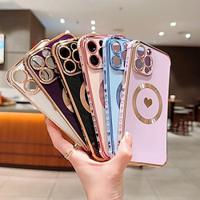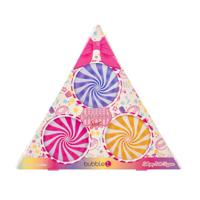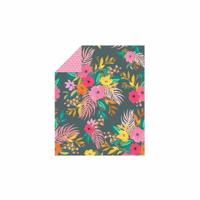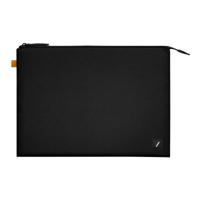About Napkins
The table setting impacts the appearance of the food you serve. Moreover, the table setting indicates people’s feelings about partaking in a meal together. The extra effort of including a well-folded napkin on the table shows people that you consider them essential and appreciate their presence.
Napkins comprise rectangular or square clothing that is in use commonly for wiping the fingers and mouth while eating at the table. A napkin or face towel or serviette is usually tiny. Other people produce them in designs and shapes. The antique type remains on the side of the setting outside the outermost fork on a table. To protect the clothes, one needs to unfold table napkins and place them on the lap. After completing a meal, the linen napkin is returned to the table. Cloth napkins are often in use for formal dinners, while paper types are common during casual events, including cocktail receptions. In brief, they serve both decorative and practical purposes.
History of napkins
The name napkin originated from the Middle East, in which nappe is a French term meaning a table cover. The first one had a lump of dough which was made by cutting a mixture into tiny pieces while rolling and kneading it at the table. This custom fostered the use of bread for wiping hands after a meal. Napkins were available in small and large lengths in Roman antiquity. In the early Middle Ages, they were no longer in use, and people wiped their mouths with whatever was available such as the back of the hand. Another invention was there in which three clothes were laid on the table in a different design. By the end of the 17th century, one could find them in diverse sizes for varying events.
Defining characteristics of napkins
People uniquely fold them to increase the aesthetic value of a dining table. The folding refers to the art of determining the design a napkin would take when placed on the table. There are variations in the decorative folding whereby a glass, ring or rectangular type is standard. For instance, a glass design is suitable for wedding napkins as it creates an amazing visual effect on the whole dining area. The initial instruction manual for artistic folding came into existence in 1639. The shift from simply laying a tablecloth flat on a table to a folded art object occurred in the 16th century. Though perceived as a complicated task at first glance, the art of folding is an easy way of transforming the appearance of a dining table for varying occasions.
Uses of napkins
The ones with prints are common to signal the start of a meal. For instance, if one is hosting some guests, one needs to alert by placing kitchen napkins on the lap for them to follow suit. A napkin is common for gently wiping one’s side of the mouth to eradicate sauces and crumbs. One should hold it in a manner that the inside of the top layer is in use for wiping to avert having a visible stain napkin on the lap. An individual should cover the nose and mouth with a napkin to keep the germs contained. However, people should excuse themselves and leave the table in case of persistent coughing. Therefore, it serves as a decorative element as well as a protective rudiment.
Types of napkins
Dispenser napkins are suitable for entertainment joints such as bars and restaurants. In other instances, people fold and place the napkins on top of each other in the dispenser. Beverage type folds in multiple layers and has funny writings on them. They are of high-quality materials to increase their absorbing capacities. The dinner type is fairly large to ensure complete coverage of the lap. This protects one’s clothing from accidental spill-offs. Dinner napkins should be thick for them to use for an entire meal without forming holes. Hence, the design, type, and size of napkins depend on the purpose.
Tips on how to buy Napkins online in the UAE
Napkins serve different purposes that range from decorative to protective tenacities. For instance, the decoupaging decorative napkins may be used to upgrade a mirror frame. On the other hand, a kitchen napkin may be used to control the spread of germs by covering the mouth and nose when coughing. Choosing the most appropriate napkin and comprehending the right size based on the level of formality of a meal is essential in adding a special touch to the table setting. The following are some of the most important aspects to consider when selecting napkins in the market.
- Construction materials – The best material for cloth napkins is polyester, as it blends well with other synthetic materials. Moreover, this fabric is stain-resistant. Nevertheless, one may consider selecting a napkin made of cotton and satin as they are a good choice for sophistication.
- Cost – Despite the availability of cloth napkins bulk in the market, always consider the price of each commodity. The best product falls within the expected budget.
- Company reputation – Assess the reputation of the company selling the napkins to make the most apposite purchasing decision. Important company details are available on diverse online sites for customer reviews.
Now that you already know the tips for choosing the best table napkin, it’s time to start the shopping adventure here on Shops.ae. We offer a wide array of home & living products and kitchen utensils to choose from. So, explore our product search engine today and enjoy great deals from top brands and sellers!
Question & Answer
Can napkins be used in place of toilet paper?
Napkins may be used as an alternative to toilet paper. This is because napkins are soft and can not irritate the skin. Moreover, top napkin brands manufacture products that are thick enough for ease of use in the toilet without breaking. Following the use of a napkin in the toilet, one should dispose of it in the trash rather than flushing. This is because napkins for sale do not dissolve quickly in water and are likely to cause blockage of the toilet drain. Additionally, they are manufactured with heavier and tighter materials than toilet paper which hardly disintegrates. Therefore, napkins may be considered a quick and cost-effective alternative for tissue paper.
How are napkins folded?
The primary objective of forming a distinctive napkin fold is to improve one’s table presentation by creating a harmonious atmosphere. Napkin folding is influenced by various factors. The design of the room in regard to the external view from the window and the height of the ceiling is an influencing factor in the choice of napkin fold design. For instance, the high standing decoupage paper napkins are more suitable in rooms with a fairly high ceiling. On the other hand, if the view from the window is full of green and natural elements, one may use IKEA napkins folds that conflict with the picturesque view. On special events, the folding should honour the purpose of the occasion. Overall, the dining area is better served using the most appropriate size of napkin fold and the correct colour in respect to the room decor.
Where should napkins be placed on a table?
The placement of napkins on a table is influenced by whether it’s for formal or informal purposes. For the formal setting, napkins are placed on the left of the forks if there is space on the table. One may also place them under the forks or on the placemat in case of limited space. For informal settings, napkins are placed under the forks or in the middle of the table. For everyday dinner, the napkins may be placed on top of the dinner plate or beneath the forks. Prior to eating, one should place a napkin on the lap. After dinner, the napkin should be lightly folded and placed on the table.
Which napkin is best?
The best napkin comprises high-quality materials. The materials should have the preferred thickness and high absorbance properties. The most preferred fabric is polyester as it blends with other materials and is stain resistant. The best napkin falls within one’s budget. It is irrational to incur extra costs owning to ineffective planning. Moreover, the best napkin allows one to fold it into different shapes and designs. The art of napkin folding is essential in improving the appearance of a table.
Can napkins be microwaved?
One may place cheap paper napkins over food to ensure it does not splatter the inside of a microwave. The best technique is placing it on top of the food to prevent it from getting stuck. Microwave ovens do not produce the same amount of heat as the conventional oven. They give microwaves which are a form of electromagnetic radiation that excites the water molecules in the food to raise its temperature. This explains why people add water to food before placing it in the oven. The electromagnetic radiation may excite other materials other than water, such as plastics and metals. The best cloth napkins for daily use are microwave-safe which implies that the construction materials are not affected by electromagnetic radiation.

